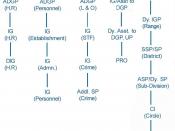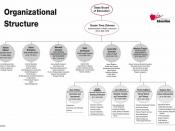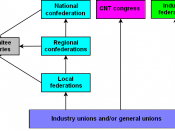New DirectionInnovation is the process by which organizations use their resources and competences to develop new or improved goods and services or to develop new production and operating systems so that they can better respond to the needs of their customers (Jones, 2004, pg. 403). Sherman Computer Repair is a small computer repair company seeking an opportunity to innovate and move from computer repair to computer assembly. Because innovation brings about change, Sherman Computer Repair must evaluate and restructure the way the organization is designed to enable the introduction of new technologies and services as the organization grows with the environment.
Organizing for innovation continues to be a challenge for many companies (Davila, Epstein & Shelton, 2006, pg. 87). Sherman Computer Repair must determine the steps necessary for the organization to have a new professional workforce and technology. This paper presents the reader with an explanation of Sherman Computer Repair's organizational design and an evaluation of the weaknesses and strengths of the company's external environment.
An assessment of the employee's talents and skills along with the barriers to change currently in the company will be identified.
Sherman Computer Repair Organizational DesignSherman Computer Repair currently operates in three locations where customers can bring broken hardware for repairs with each location employing a manager, 3 computer repair technicians, and a receptionist. The organization also employs 12 mobile technicians for home repair service to accommodate customers with computer problems.
As organizations grow, managers must decide how to control and coordinate the activities that are required for the organization to create value (Jones, 2004, pg. 95). Sherman Computer Repair's current organizational structure is a functional structure. A functional structure is a design that groups people on the basis of their common expertise and experience or because they use the same resources (Jones, 2004, pg.


